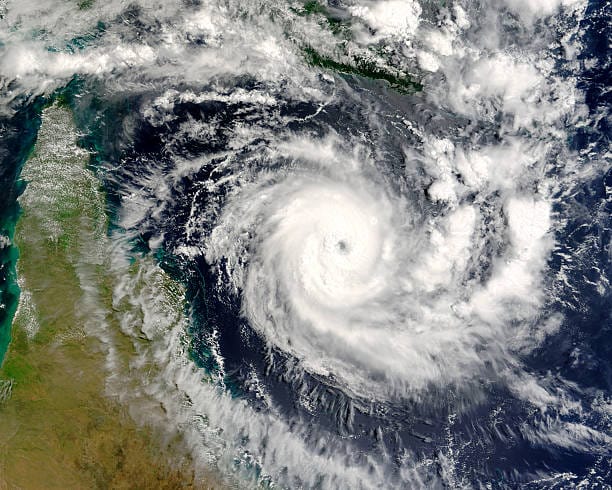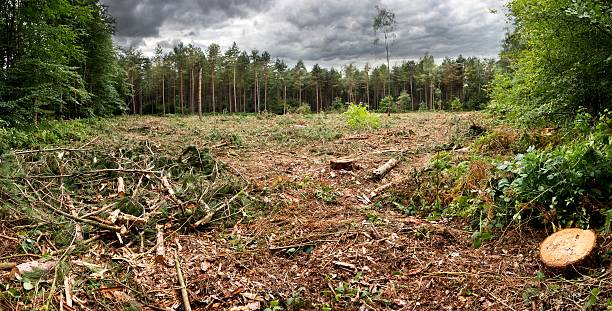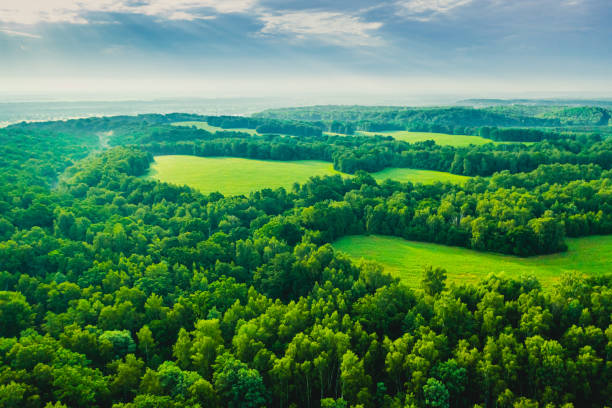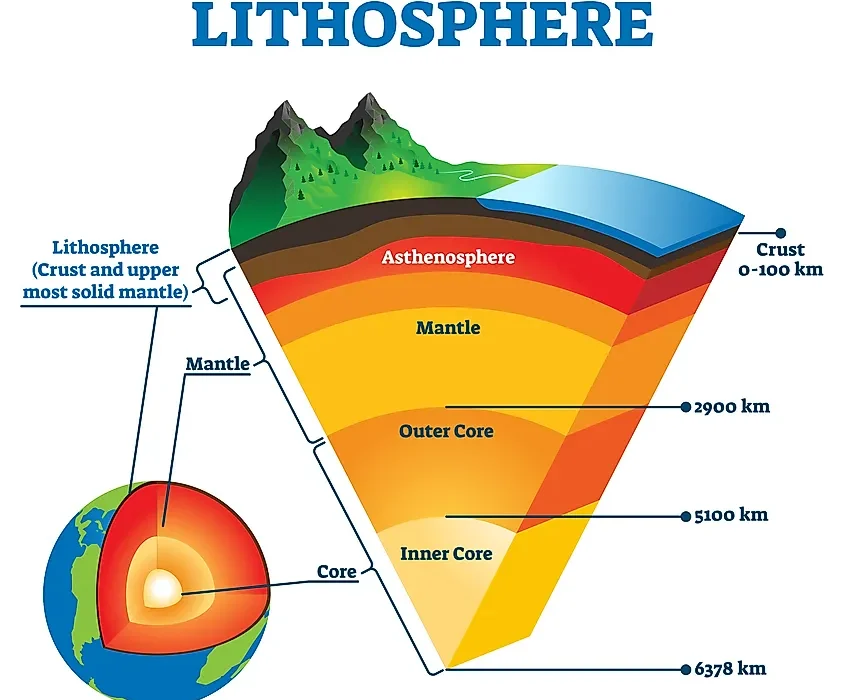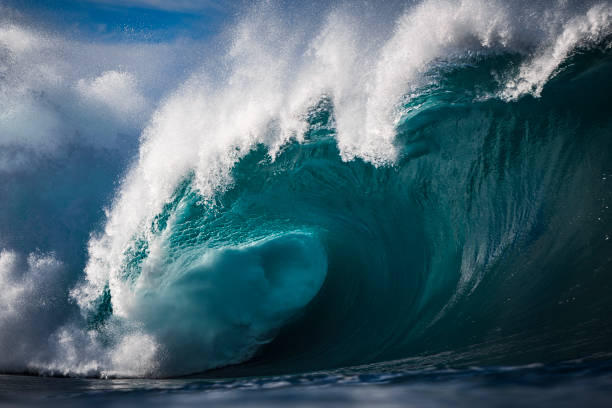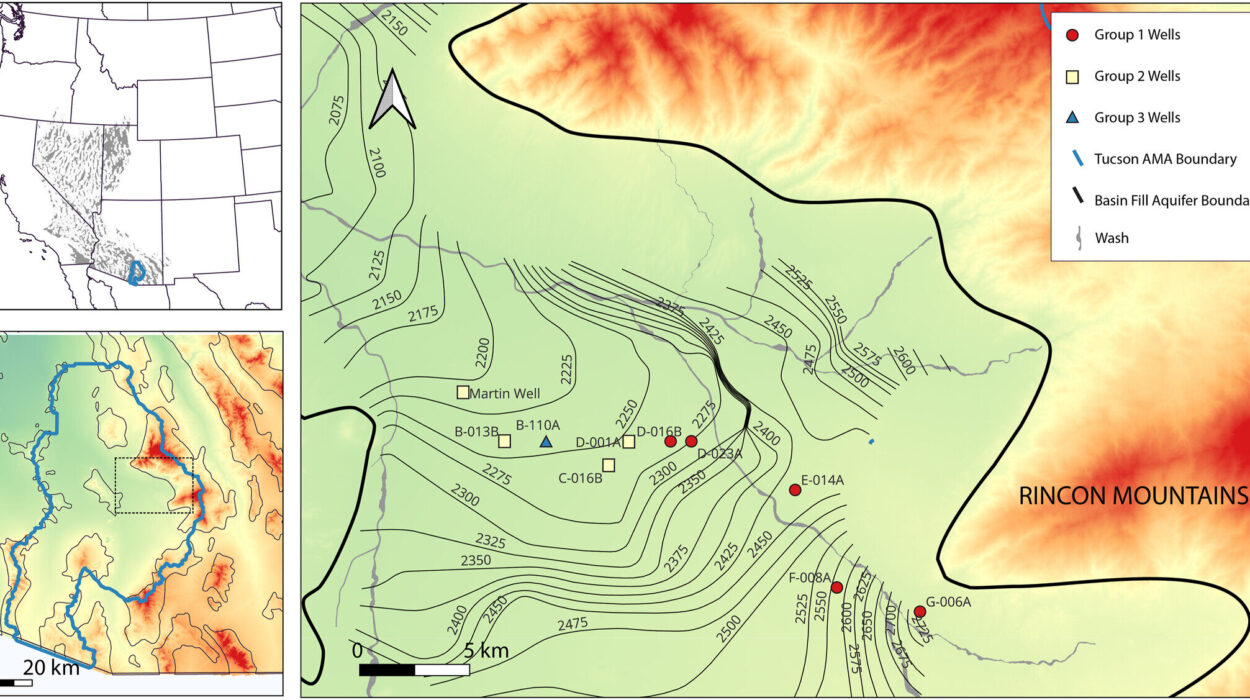Far out in the vast, restless ocean, where the horizon is a seamless meeting of sea and sky, the first whispers of a hurricane begin almost imperceptibly. Warm tropical waters shimmer under the sun, releasing heat and moisture into the air above. This invisible exchange sets the stage for one of nature’s most formidable displays of power.
A hurricane does not spring into existence fully formed; it begins humbly, as a cluster of thunderstorms called a tropical disturbance. These clouds are driven by the heat of the ocean and the constant churn of trade winds. Most such disturbances dissipate within days, their energy spent harmlessly in the open sea. But sometimes, the conditions align in a way that tips the balance — warm water, moist air, and a subtle but vital twist in the wind patterns. When these forces combine, a seed of fury begins to grow.
This is the genesis of a storm that, given time and fuel, can become a hurricane — a vast, spiraling engine of wind and water, capable of reshaping coastlines and rewriting the lives of millions.
The Science of Formation
To understand hurricanes is to understand the delicate yet powerful dance between heat and motion in our atmosphere. At their heart, hurricanes are heat engines, driven by the transfer of thermal energy from the ocean to the atmosphere. The process begins with warm ocean water — at least 26.5°C (about 80°F) — over a depth of roughly 50 meters. This warmth fuels evaporation, sending vast quantities of water vapor into the air.
As moist air rises, it cools, and the water vapor condenses into clouds, releasing latent heat. This heat warms the surrounding air, causing it to rise faster and draw in more air from below. The Earth’s rotation then begins to spin the system due to the Coriolis effect, organizing the chaos into a rotating structure.
Over time, if wind shear — the change in wind speed and direction with height — is low, the storm’s vertical structure remains intact. The rotation tightens, the central pressure drops, and the winds accelerate. A tropical depression becomes a tropical storm, and if sustained winds exceed 74 miles per hour (119 km/h), it earns the title feared around the world: hurricane.
The Anatomy of a Hurricane
From above, a mature hurricane is a breathtaking sight — a perfect spiral of dense clouds wrapping around a clear, circular center. This center, the eye, is a surreal calm in the heart of chaos, where winds drop and skies may even appear blue. Surrounding the eye is the eyewall, a fortress of towering thunderstorms where the most violent winds and heaviest rains occur. The eyewall is the engine room, where the storm’s destructive force reaches its peak.
Beyond the eyewall, bands of thunderstorms spiral outward, carrying squalls of rain and gusting winds for hundreds of miles. These rainbands can spawn tornadoes and trigger flash floods far from the storm’s center. The hurricane as a whole can span hundreds of miles across, with its influence felt even farther.
It is in this structure — the calm center, the violent ring, the radiating arms — that the hurricane reveals its paradoxical nature: a serene eye surrounded by unrelenting fury.
The Life Cycle
A hurricane’s life is one of transformation. Born from a tropical disturbance, it grows in stages, feeding on warm water and favorable winds. In its prime, it is a self-sustaining monster, converting ocean heat into kinetic energy with staggering efficiency. But like all living things, it has a finite existence.
When a hurricane moves over cooler water, or encounters strong wind shear, its structure begins to unravel. The supply of heat and moisture is cut off, the towering clouds collapse, and the winds weaken. Landfall often hastens this decline, as the storm is starved of its oceanic fuel and friction with the terrain disrupts its circulation.
Yet even as it weakens, a dying hurricane can unleash torrents of rain, flooding rivers and valleys far inland. Long after the wind has faded, the water can remain, silently marking the storm’s passing.
The Power of Water
Though hurricanes are known for their winds, it is water that often causes the greatest devastation. Storm surge — the abnormal rise in sea level driven by a hurricane’s winds — can swallow entire coastal communities. The surge is especially deadly when it coincides with high tide, sending walls of water several meters high crashing onto land.
Inland, relentless rainfall can overwhelm rivers and drainage systems, turning streets into rivers and plains into lakes. The slow-moving hurricanes are particularly dangerous, as they can dump enormous amounts of rain over the same area for days. Hurricane Harvey in 2017, for instance, stalled over Texas, dropping more than 60 inches of rain in some areas — a deluge without precedent in modern U.S. history.
Floodwaters do not merely disrupt; they can erase the landscape, leaving behind altered coastlines, contaminated water supplies, and a long, slow road to recovery.
Human Encounters with the Storm
Throughout history, humans have lived with hurricanes — fearing them, preparing for them, surviving them, and sometimes perishing in their wake. Indigenous peoples of the Caribbean, who first gave the storms their name (from the Taíno word hurakán), understood their seasonal rhythms and adapted their lives accordingly. Early European colonists learned to respect these tempests after losing ships and settlements to their wrath.
In the modern era, technology allows us to track hurricanes from birth to death, predicting their paths with increasing accuracy. Satellites watch from space, hurricane hunter aircraft fly into the storms to collect data, and computer models project their future movements. Yet even with all this knowledge, the precise impact of a hurricane can still surprise. A slight shift in track can mean the difference between a close call and a direct hit.
The Emotional Landscape
For those in the path of a hurricane, the experience is not just meteorological but deeply emotional. There is the tense, quiet urgency of preparation — boarding up windows, stocking food and water, deciding whether to evacuate. There is the eerie stillness before the arrival, when the sky takes on strange colors and the wind carries a hint of the chaos to come. Then the storm arrives: the howling of the wind, the drumming of rain, the sudden crashes of breaking trees or snapping power lines.
And finally, there is the aftermath — stepping outside to a world transformed, where familiar streets are gone and the air carries the smell of salt, mud, and loss.
Hurricanes in a Warming World
Climate change is reshaping the context in which hurricanes form. Warmer ocean waters provide more energy for storms, increasing their potential intensity. A warmer atmosphere holds more moisture, leading to heavier rainfall. While the total number of hurricanes in a year may not change significantly, the proportion of high-intensity storms appears to be rising.
Moreover, rising sea levels make storm surge more dangerous, as even a modest surge can now reach farther inland. Coastal cities around the world — from Miami to Manila — face increasing vulnerability in the decades to come.
Scientists work tirelessly to refine models and projections, aiming to give communities more time and better strategies to prepare. Yet the challenge is as much social and political as it is scientific, involving questions of infrastructure, equity, and resilience.
Lessons from the Storm
Hurricanes remind us of our place in the natural order. They are not acts of malice but expressions of the planet’s energy balance, moving heat from the tropics toward the poles. In their raw power, they reveal both the fragility and the resilience of human society.
From ancient navigators to modern engineers, people have learned from each encounter — improving building codes, designing better evacuation plans, and strengthening communication networks. And still, each hurricane writes its own story, challenging what we thought we knew.
A Force to Respect
The hurricane is both a marvel and a menace. It is a masterpiece of atmospheric physics, a swirling testament to the laws of thermodynamics and fluid motion. But it is also a reminder that, despite our technology and ambition, we remain bound to the rhythms of Earth’s climate.
To watch a hurricane from space is to see beauty: the perfect symmetry of the spiral, the glint of sunlight on cloud tops. To stand in its path is to feel awe and fear in equal measure. It is this duality — the blend of elegance and destruction — that makes hurricanes unforgettable.
